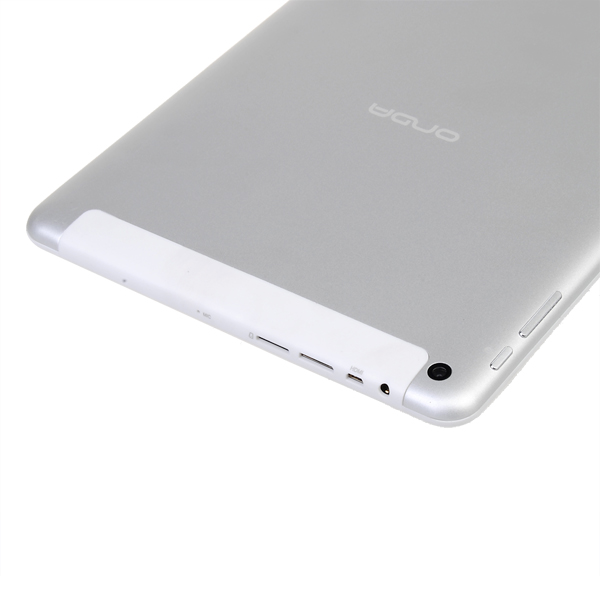Drivers Allwinner A80
Mecanica De Fluidos Cengel Cimbala Pdf Download. Chip maker Allwinner is launching its first octa-core processor. As, the features 4 ARM Cortex-A15 CPU cores and 4 ARM Cortex-A7 cores. Thanks to the chip’s heterogeneous design, it can use all 8 cores at once, or just as many as needed to complete a given task. The processor also feature Imagination PowerVR Series6 graphics. Allwinner is positioning the UltraOcta A80 as a solution for tablets, media players, and even notebooks, desktops, or smart televisions. The chip features PowerVR G6230 graphics and supports 4K video encoding and decoding in the H.265 codec. It can also support up to three displays at once.
Allwinner made a splash a few years ago by offering a line of low-power, ARM-based chips that led to low-cost Chinese tablets and TV boxes. Rivals including MediaTek have made some serious headway in the space recently, but Allwinner remains a popular choice with some open source enthusiasts thanks to the company’s habit of releasing a fair amount of documentation for its chips (but not for the proprietary graphics components). The makers of the upcoming open gaming platform and, for instance, have chosen (at least initially) to use Allwinner chips.
Unfortunately, we cannot directly supply graphics drivers for our customers' platforms. We deliver the source code of our reference driver to customers. It's then their responsibility to integrate the driver with their platforms and distribute binaries to their customers. I would recommend contacting AllWinner to.
While it remains to be seen just how open the upcoming UltraOcta A80 chip will be, the new chip looks powerful enough to appeal to folks beyond the open source community. Still, it’s very misleading. The Pyra team hasn’t even tentatively picked A80, it’s more like they were intent on using OMAP5 for a long time and some people asked them to look into A80. The Pyra team hasn’t had any opinion about Allwinner, except a bit of a reluctance to rely on Chinese SoCs, but they agreed to look into it. So they e-mailed Allwinner and got a response that was basically saying they can’t release any information at all, that they won’t give up an OptimusBoard for it, and that the chip won’t even be available until September. Quite a different impression from what Allwinner has given publicly so far, and needless to say the guy in charge of Pyra (EvilDragon) didn’t find it encouraging at all.

This SoC looks like it has a lot of potential and a lot of advantages over OMAP5; personally I’d love to see Read more ». The problem for the A31 is the same than for the A80 and OMAP5, they have both PowerVR GPU, that really lake opensource driver. That’s probably the GPU that have le less chance to have GPU driver (see last FOSDEM conference). In the today state of available SoCs, Samsung Exynos 5250, 5440, 5260 or 5420, Mediatek MT6732 and Rockchip 3288, seems the only one to have decent chance to have an OpenSource driver, both using ARM Mali GPU.
Eventually Qualcomm could be an alternative, but I believe (not sure) there are more expensive and not ready to give chips to open hardware project. So I bet, Samsung (that seems to works with mainline Linux by themselve), Rockchip or Mediatek could be a better answer. There are already Hardkernel *droid motherboards for Samsung, but it could be more expEnsive than RK or MT ones. A big problem is that few are willing to provide SoCs in small volume for niche products.
That includes Samsung, who turned down EvilDragon after considering offering their lowliest Exynos 5 (5250). So they’re not an option.
They support HardKernel for these purposes, but probably just so they can act as an official dev board for bigger customers, and because they have a long established relationship and are situated in the same country. Open source is nice, but if you can at least get proper Linux support with a binary blob for the GPU then that’s something. It’s not enough to just have reverse engineered GPU drivers in the userspace, there’s a lot of other peripheral driver work. MediaTek and Rockchip don’t seem interested in supporting normal Linux distros at all, while TI is, and Allwinner at least provided some nominal level of support in the past.
Some Opensource dev showed than binaries drivers for X11. For example, ARM Mali driver doesn’t use the full potential of X11 possibility, OSS developpers managed to have 3 to 10 time faster driver for the 2D part, was faster too by mixing this OSS 2D driver with binary blob 3d driver and expected also faster OSS driver for 3d part I’ve myself a Cubieboard2, and most peripheral works on opensource version, since I’ve it (around september). Only internal NAND didn’t work at that time, but SATA and mmc/SSD works perfectly, so that was not a big deal. I can use every usb devices I use on X86 plateform too (DSLR camera, wacom tablet, etc). Sunxi project team made a really good work.
The only limit else was OSS 3d driver that wasn’t at this time linked with Mesa, so unusable with X11, and binary blob driver had to be used.